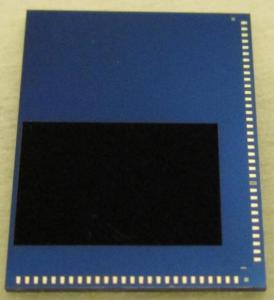Nano-Black Coating on Silicon CMOS Image Sensors for Extreme Sensitivity

A novel anti-reflection process was demonstrated which improves the quantum efficiency (QE) of a CMOS image sensor, with particular benefits at the ultraviolet (UV) and near infrared (NIR) ends of the electromagnetic spectrum. Also, the dark current and photoresponse non-uniformity (PRNU) were reduced to about 33% and 55%, respectively, of the values for a conventional control sensor. Spatial resolution seemed to be reduced in the NIR, as indicated by MTF measurements, but further investigations are required. The nano-black anti-reflection layer was made using a reactive-ion-etch technique to form nano-scale spikes at the surface which greatly reduce the reflectivity of the surface, which has a matt-black appearance. The sensor used, a CIS115 from Teledyne-e2v (as used for the JUICE JANUS camera), is a back-side-illuminated (BSI) device with ≈10 m active silicon thickness and 2000 1504 pinned photodiode pixels with a pitch of 7 m. The improved QE is most impressive below 400 nm, where the QE increases towards 100%, although no correction was made for the increased quantum yield, as this is not easily quantified. The QE of a CIS115 sensor with a conventional antireflection (AR) coating shows a steep drop below 400 nm. There is also an improvement in QE in the NIR (from 700 nm to 1100 nm) for the nano-black sensor, and this is despite the approx. 1 m thinning of the silicon by the etching process, which would normally reduce the QE. Some of the QE improvement may be the result of increased scattering of the incident light or by the improved surface passivation in the nano-black devices
